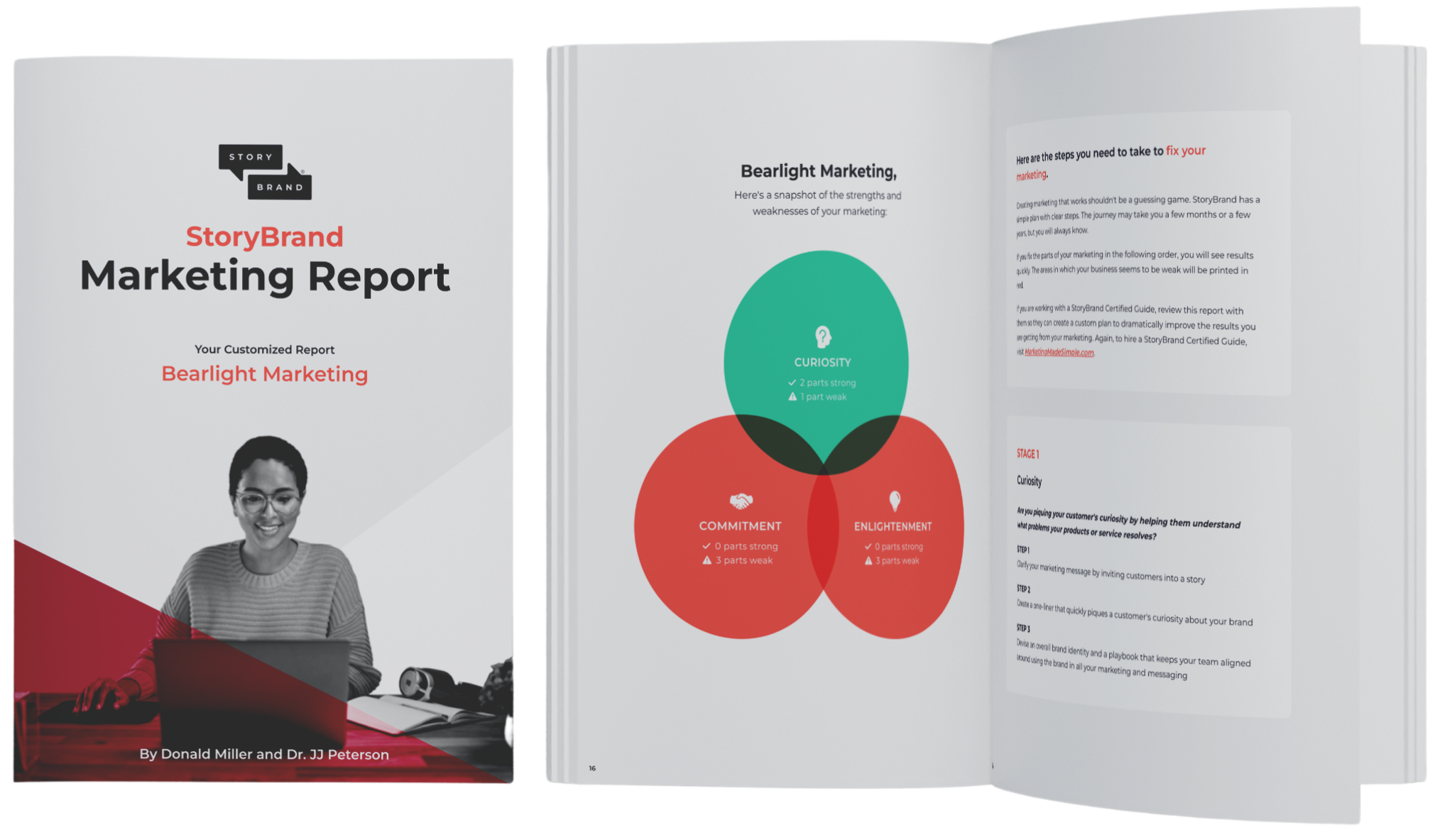Conversion. Capturing. Targeting.
These kinds of terms dominate the marketing landscape today.
And I’m not against them altogether. But there’s a human element that’s missing.
Who wants to be ‘captured’? ‘Targeted’? Words like this can feel more fitting for the battlefield than for buying decisions.
So try this on for size: connection.
It’s easy to overcomplicate things and forget that marketing is simply the process of establishing a mutually beneficial relationship (credit to Ryan Deiss, CEO of DigitalMarketer, for that definition). And good relationships happen when people genuinely connect.
A lot of marketing tries to generate conversion without building connection. That’s why in most cases, it fails.
But when you prioritize connection, conversion naturally follows. That doesn’t mean you don’t invite buying decisions. But it does mean you’re willing to do the hard work of building the relationship before cashing in.
So connection-oriented marketing is just that: hard work. It takes more content and more thoughtfulness toward your customer and how they experience you.
Here are 3 tips to help you create connection with your communications content.
Tip #1: Tell stories
There’s no better communication device in human history than stories. Stories help us pass along information and make sense of the world.
They also help us share our experiences and understand one another. And that’s where they’re crucial for fostering connection.
Instead of just blasting people with information or using cheesy sales language (“But wait, there’s more!”), frame your communication in terms of their story:
- Who they are
- What they’re after in life
- The problems that stand in their way
- How you can help them win the day
- What’s at stake if they don’t
Always, always, always tell your customer’s story. Which means you have to know your customer’s story.
But it doesn’t mean you need to tell only your customer’s story. You need to tell your own as well. Because connection happens when we share our stories.
The home protection company SimpliSafe has a great podcast ad that despite my best attempts to skip through, I’ve still remembered. They mention the founders developing their technology after some friends had their house broken into.
It’s that simple. Zero money spent on hiring a voice actor, picking background music, editing audio. They just hand the host (in my case, Bill Simmons) a script that includes this quick detail.
But it works. Why do I remember that ad in particular? Because my brain remembers a story about people much better than abstract information.
And in some way, however small, I actually experience a measure of connection to these people and this company.
Tip #2: Follow the rules of relationship
A lot of small business owners get frustrated with marketing because it doesn’t “work.” But the reason a lot of them don’t see results is because their content is exclusively sales-oriented–that is, it’s always and only asking for customers to buy.
That’s like proposing on the first date. And unless your customers treat buying like an arranged marriage, that’s moving too fast.
Instead, create content that strategically builds the trust your customer needs before buying from you. I highly recommend utilizing the Customer Value Journey from DigitalMarketer as a tool to help you do so.
And yes, this is going to take time and effort. Just like healthy relationships.
It’s also going to take consistency.
Probably the number one struggle for most of us in marketing is simply staying consistent with it. It’s often the first thing to go when our schedules get full and time is short.
But remember: no one becomes best friends overnight. Being consistent with your content communicates to people, “Hey, I care about you and want to keep showing up for you.”
Here are two hacks to help you get more consistent:
1. Don’t create marketing content as often as you’re posting it.
That is, create a month’s worth of content all at once and queue it up to be posted when you want. No one should be creating their own content every day. This will allow you to create faster and get ahead of the game instead of emergency posting.
2. Repackage your content
Don’t write an entire blog post, then do something entirely different on social media. You will burn out. Instead, take pieces and re-package them for other platforms. People are generally consuming your content on one platform anyway. (Full disclosure: this blog is being repackaged as emails and LinkedIn posts. I do a month’s worth of marketing content in 2 hours.)
Tip #3: Know your role
It’s easy to forget how important roles are in relationships (when they’re attributed correctly and responsibly, not abusively). Imagine showing up to work tomorrow and your boss tells you all positions and labels have been removed—it would be chaos.
As it pertains to your customers, remember that you are a guide to them—you are not their hero. And as a guide, you need to demonstrate two things: empathy and authority.
Someone with lots of empathy but no authority is nice, but they can’t help me. They’re not leading me out of my problem. Picture George from Of Mice and Men.
Someone with lots of authority but no empathy may have all the expertise in the world. But they’re a douche (yes, I said it). Picture Spock from Star Trek.
The reality is that your customers need to hear both from you.
They need to feel like you genuinely understand their problems and their perspective. But they also need to know you have what it takes to lead them out.
Need help bridging the disconnect?
Let’s schedule a call to figure out where exactly the gaps in the relationship are and what you can do to mend them.
